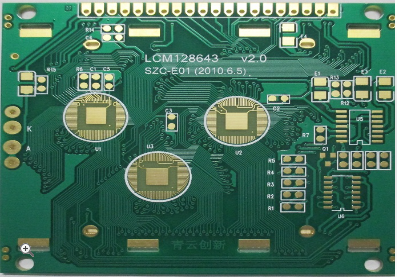PRODUCTS
Optimizing High Frequency Board Traces

Optimizing high-frequency board traces is crucial for the successful operation of modern electronic devices. As operating frequencies continue to climb, the parasitic effects of the printed circuit board (PCB) itself become increasingly significant, potentially leading to signal degradation, unexpected impedance mismatches, and ultimately, system failure. Understanding and mitigating these effects is paramount for designers aiming to achieve optimal performance and reliability in high-speed applications such as 5G communication systems, high-speed data transmission networks, and advanced radar technologies. This necessitates a careful consideration of several key factors during the design process.
Understanding Signal Propagation at High Frequencies
At lower frequencies, signal propagation on a PCB trace can be approximated as a simple transmission line. However, at high frequencies, the wavelength of the signal becomes comparable to or even smaller than the dimensions of the trace and the spacing between traces. This leads to significant distributed capacitance and inductance along the trace length, impacting the characteristic impedance and causing signal reflections and distortions. These parasitic effects are exacerbated by the dielectric material of the PCB, trace width, and the presence of nearby conductors. Ignoring these factors can lead to significant signal attenuation, ringing, and crosstalk, rendering the design unstable and unreliable.
The speed of signal propagation is directly influenced by the dielectric constant of the PCB material. Lower dielectric constant materials like PTFE (polytetrafluoroethylene) are preferred for high-frequency applications as they offer faster signal propagation and reduced signal distortion compared to FR4, a commonly used but higher-loss material. The choice of material significantly impacts trace length calculations and impedance matching strategies. Careful selection is therefore essential in ensuring signal integrity.
Controlling Impedance and Minimizing Reflections
Maintaining a consistent characteristic impedance along the trace is critical for minimizing signal reflections. Reflections occur when a signal encounters an impedance discontinuity, causing a portion of the signal to be reflected back towards the source. These reflections can lead to signal distortion, ringing (overshoots and undershoots), and even data corruption. The characteristic impedance (Z0) is determined by the trace's physical dimensions (width, thickness, and height above the ground plane) and the dielectric constant of the PCB material. Designers utilize impedance calculators and simulation tools to determine the appropriate trace width required for a specific impedance, often 50 ohms for optimal signal transmission.
Techniques for controlling impedance include using controlled impedance traces, ensuring consistent trace width, and maintaining a constant distance to the reference plane (usually ground). The use of microstrip or stripline transmission line structures is common practice for high-frequency designs. These structures provide better control over the impedance and minimize unwanted radiation. Proper termination at the end of the trace, such as using a resistor matching the characteristic impedance, is also crucial to prevent reflections from the unterminated end.
Minimizing Crosstalk and EMI/RFI
Crosstalk is the unwanted coupling of signals between adjacent traces, leading to signal interference and potential data errors. High-frequency signals are particularly susceptible to crosstalk due to their high rate of change and electromagnetic radiation. Minimizing crosstalk involves careful routing of traces, maintaining sufficient separation between signal lines, and using proper grounding techniques. Shielding techniques, such as using ground planes and conductive enclosures, can also help significantly reduce crosstalk.
Electromagnetic interference (EMI) and radio frequency interference (RFI) can also severely impact the performance of high-frequency circuits. These unwanted electromagnetic emissions can be generated by the circuit itself or picked up from external sources. Careful PCB layout practices, proper shielding, and the use of EMI/RFI filters can mitigate these issues. These measures are especially vital for compliance with regulatory standards.
Advanced Techniques for High-Frequency Optimization
Beyond basic trace design considerations, advanced techniques are often employed for optimizing high-frequency performance. These include differential signaling, which uses two traces carrying complementary signals to cancel out common-mode noise and improve signal integrity. Controlled impedance structures such as microstrip and stripline offer better control over impedance and reduce unwanted radiation. The use of embedded passive components, such as capacitors and inductors, can be employed to further fine-tune the impedance matching and filtering characteristics of the circuit.
Finally, comprehensive simulations are crucial throughout the design process. Using electromagnetic field (EMF) simulators allows designers to predict and analyze signal integrity issues before manufacturing the PCB. This iterative process of design, simulation, and refinement ensures optimal performance and minimizes costly revisions.
SUBSCRIBE
INQUIRY

